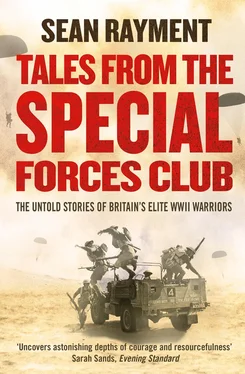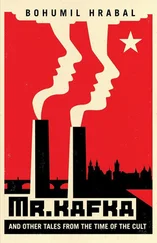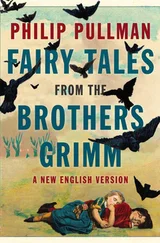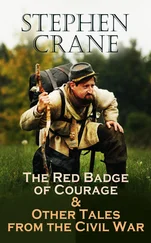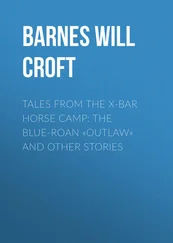‘The fort was like one of those from the film Beau Geste which the Italians were very fond of building. It was being used to cache supplies for enemy troops on the move. It was a sitting duck – there were no troops outside covering the vulnerable points. Paul Eitzen gave direction orders to the gun team and we banged away for a pre-arranged number of rounds and minutes and then ceased. The first round we fired was a dud; it hadn’t exploded and we later found it in the middle of the fort.
‘Once the firing had ceased, some of the Rhodesians from S Patrol who had accompanied us went forward and captured the fort, which wasn’t that difficult because after the first round the four Italians occupying the fort ran away, so the place was empty, but they were quickly captured. The structure hadn’t been badly damaged because the 25-pounder isn’t really a big gun.
‘Once the fort had been captured, we withdrew into the desert with the four prisoners while the Rhodesians headed towards the coast on another reconnaissance mission. We made camp and tried to relax and explain to the Italians, as best as we could given the language problem, that we were going to look after them and that they would come to no harm. They responded to our friendship but I have to say they were a pretty unimpressive bunch – I think they were probably quite happy to have been captured because it meant they were out of the war. In fact, later that night we got out the rum ration and had a bit of a party. They couldn’t speak English and we couldn’t speak Italian, but it was all very friendly.
‘After the Rhodesians came back from their reconnaissance patrol we started making our way back to Siwa, but on the way this dreadful 10-ton Mack truck kept getting stuck in the soft sand. It was very difficult to get it out, because it was too heavy for the sand trays – a device used to free vehicles stuck in soft sand. The vehicle also had brake problems, and the thing became such a nuisance that eventually the Rhodesian officer in command of the patrol lost his patience and said, “Leave it.” We took the gun off the back of the truck and towed it behind one of the patrol vehicles and abandoned the 10-tonner.’
The LRDG had a limited number of vehicles at that stage of the war, and the difficulties with transporting even a relatively small gun such as a 25-pounder across the desert were immense. When the patrol arrived back at Siwa the artillery unit was given an Italian lorry to transport the gun, but it proved fairly ineffective, and after Christmas the unit was disbanded. Most of the gunners who had been recruited for the specialist unit were sent back to their former regiments. Jimmy and Bill were desperate to remain with the LRDG, but unfortunately Bill was taken ill with pleurisy.
‘Bill was very ill. I don’t think any of us thought that he was going to make it, and at one point his grave was dug; that was how close he was to death. Bill spent all his time back in the MO’s truck, and the only thing which saved him was one of the new sulphur drugs. When he was cured, he went back to the LRDG but joined one of the New Zealand patrols as a signalman and stayed with them until the end of the desert campaign.
‘Captain David Lloyd Owen, the skipper of the Yeomanry, or Y Patrol, asked me if I would like to join his patrol and I jumped at it. I became a Lewis gunner initially, but some time later the patrol navigator was selected for a commission and I began training to take his place, first as assistant navigator and then doing the full role.
‘The main role of the LRDG was doing reconnaissance and “road watch”. This involved monitoring the movements of enemy forces along the main coast road in the Benghazi area. The patrol would position itself a couple of miles from the road, camouflage up, and each evening two men would walk up to the road to a hide, rather like a birdwatching hide. They would sit there for 24 hours, making a note of everything which went past. All of this intelligence would be passed back up the chain of command to the staff officers at General Headquarters to help formulate future offensives or withdrawals.
‘Apart from the enemy, one of the other great challenges of desert warfare is coping with the heat. In the summer the temperature often reached 120°F, while dropping to below zero at night. In the winter the weather could be miserable.
‘The stripped-down vehicles kept the soldiers cool on long patrols and the men quickly acclimatised to the heat. To cope with the heat we dressed accordingly and often wore sandals – which were given to us as a special issue – instead of boots. We found that the standard issue baggy shorts were much more comfortable than long trousers, too. We were issued with these Arab headdresses which we folded into a triangle and fixed with a ring of black material known as an egal . These were meant to protect our heads but I didn’t often wear one. I personally wore a cap comforter, a woollen thing which folded up into a cap. In the winter we wore full-length sheepskin coats, woolly hats, gloves and a thick jumper to keep out the cold.
‘We’d have a variety of devices to keep ourselves warm. We would take an Italian water bottle, which was quite a capacious thing made of aluminium, fill it with water and break up a bar of chocolate into it and hang it over the exhaust and within five miles we would have a hot drink. We each had a blanket roll, no beds or sleeping bags, and we would just unroll that by the wheel of the truck. We had a rum ration every evening and some lime powder. We would mix the rum and lime with water and when we woke up we would have a nice cold drink.’
The LRDG continued with their reconnaissance operations and before long Jimmy was established as Lloyd Owen’s personal navigator. It was at this stage that rumours began to surface about a large raid involving many different units – a major departure from the type of operations usually conducted by the LRDG.
It was widely believed that Field Marshal Erwin Rommel, known as the Desert Fox, and the commander of the Axis forces in North Africa, was planning a major offensive eastwards along the coast.
One of those working on the British plan was Colonel John ‘Shan’ Hackett, who would later command the 4th Parachute Brigade at Arnhem. In essence the plan would involve members of the LRDG, the SAS, Army Commandos, Royal Marines, Popski’s Private Army, ‡the RAF and the Royal Navy launching simultaneous attacks on the Libyan coastal city of Benghazi, where a large German garrison was based, Tobruk and Barce. Once these attacks had succeeded, the Sudanese Defence Force were to attack the Jalo Oasis. If everything went to plan, Rommel’s bold aggressive thrust to move east and destroy the 8th Army would lie in tatters.
But the plan quickly became over-ambitious and too complex. In simple terms, the plan was as follows: at Tobruk, Lieutenant-Colonel John Haselden, §a highly decorated British officer, would lead a force composed of around 80 commandos, engineers and Royal Artillery gunners, who were to capture the harbour and facilitate the landing of reinforcements by sea. Those reinforcements would then destroy underground fuel stores, release British POWs being held in the area and attack two airfields close to the city.
Meanwhile the SAS, supported by two Rhodesian LRDG patrols, would attack the harbour at Benghazi, destroying shipping and fuel storage tanks.
The raid on the Barce airfield was to be conducted by the LRDG, who would also be supported by the commander of Popski’s Private Army, Lieutenant-Colonel Vladimir Peniakoff.
Four days later the Sudanese Defence Force were to secure Jalo, which would then be used by David Stirling for further desert operations. D-Day for the operation was 13 September 1942.
Читать дальше
